What’s up, comrades of the canvas! Found yourself enticed by the fiery allure of Muay Thai, huh? Strap in tight because you’re about to embark on a thrilling journey! Originating from the ancient battlegrounds of Thailand, Muay Thai, or as we affectionately call it, the “Art of Eight Limbs,” isn’t just a sport. It’s a lifestyle, a passion, a dance of determination. It’s a way to let loose, channel your energy, and express yourself. Let’s dive headfirst into this dance, shall we?
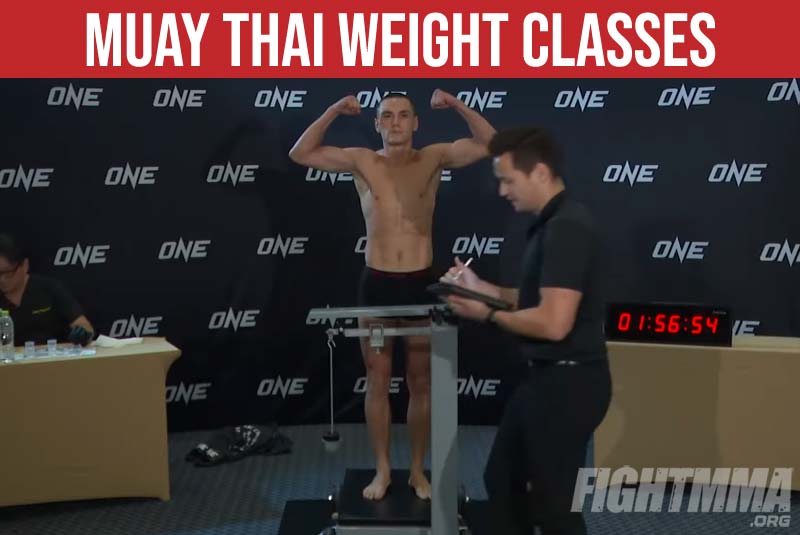
If you’re interested in learning more about the different Muay Thai weight classes, you’re in the right place. We’ll recover them in detail below. Many people don’t realize just how important they are. In the action-packed, pulse-pounding world of Muay Thai, weight classes are the silent game-changers.
Table of Contents
The Role of Weight Classes in Combat Sports

Now, let’s talk more in detail about why these weight classes are such a big deal in combat sports like Muay Thai. Picture a featherweight fighter in the ring against a heavyweight. Not a pretty sight, eh? This could be a reality without weight classes, and that wouldn’t be fair or safe.
Weight classes play a pivotal role in combat sports. They ensure fighters compete against others of similar size and strength, minimizing the risk of serious injury. But it’s not just about safety; it’s about strategy, too. Fighters within the same weight class tend to have similar speed, stamina, and power. This adds an extra layer of complexity to the fights, making them not just about brute force but about technique, precision, and strategy.
So, there you have it. The humble weight class, the great equalizer of the combat sports world, and the guardian angel of our beloved fighters. Next time you’re watching a match, take a moment to appreciate these unsung heroes. They’re the silent wheels turning behind every thrilling bout, every nail-biting moment, and every victory.
Weight Classes Overview
Below, we’ve created tables and infographics so you can quickly see the different Mauy Thai weight classes.
| Weight Class | Weight Range (lbs) |
|---|---|
| Mini Flyweight | Up to 105 |
| Flyweight | 105 to 112 |
| Bantamweight | 112 to 118 |
| Featherweight | 118 to 126 |
| Lightweight | 126 to 135 |
| Welterweight | 135 to 147 |
| Middleweight | 147 to 160 |
| Light Welterweight | 160 to 175 |
| Light Middleweight | 175 to 190 |
| Light Heavyweight | 190 and above |
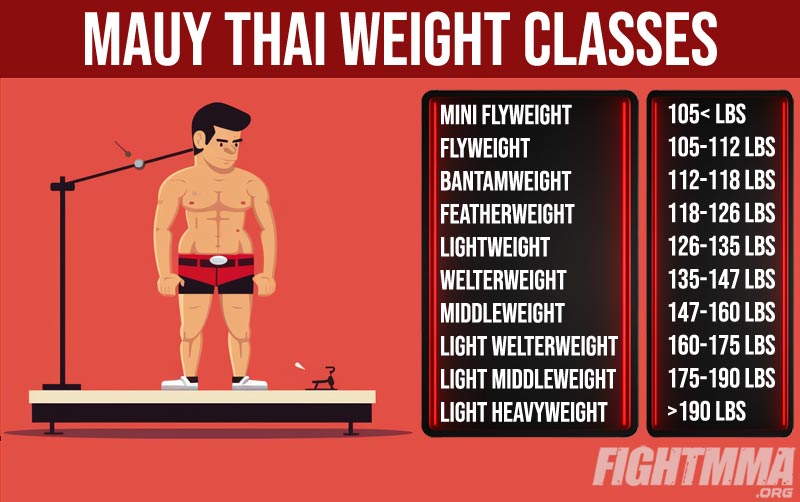
We’ll break down the different weight classes more in detail below.
Muay Thai Weight Divisions
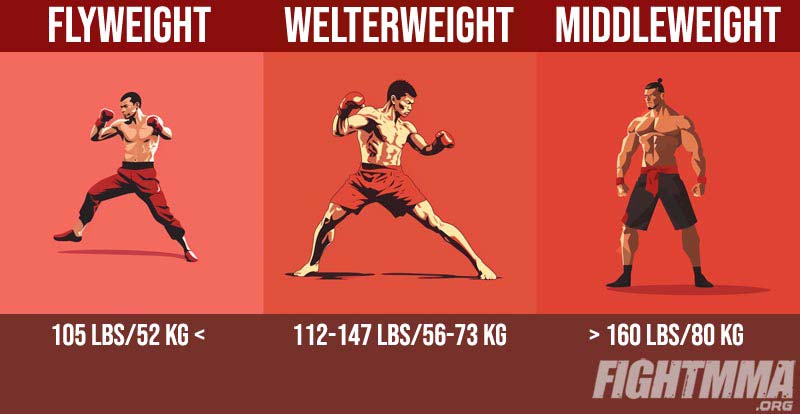
There are 10 weight divisions in Muay Thai that range from flyweight to light heavyweight. Let’s look at the most important divisions:
Mini Flyweight Division: The Feather-weights
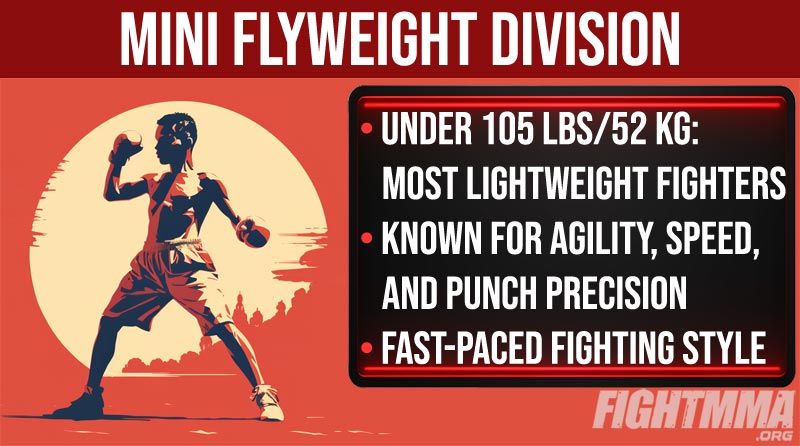
Okay, folks! Let’s start small and work our way up. First up on the scale, we have the Mini Flyweights. Now, don’t let the name fool you. These fighters, weighing in under 105 pounds, might seem like featherweights, but they pack quite a punch! Agility, speed, precision – they’ve got it all. And when they step into the ring, you’re guaranteed a fast-paced, edge-of-your-seat bout that’ll keep you guessing till the final bell.
Flyweight to Welterweight: The Middle of the Pack

Now, let’s venture into the heart of the weight class spectrum: from Flyweight to Welterweight. We’re talking about fighters weighing between 112 and 147 pounds. This is where we start seeing a beautiful blend of speed and strength. The fights become more intense, the stakes higher. It’s like Goldilocks’ porridge – not too light or heavy, just right. The perfect balance of agility and power, these weight classes offer some of the most exciting matchups in Muay Thai.
Middleweight and Above: The Heavy Hitters
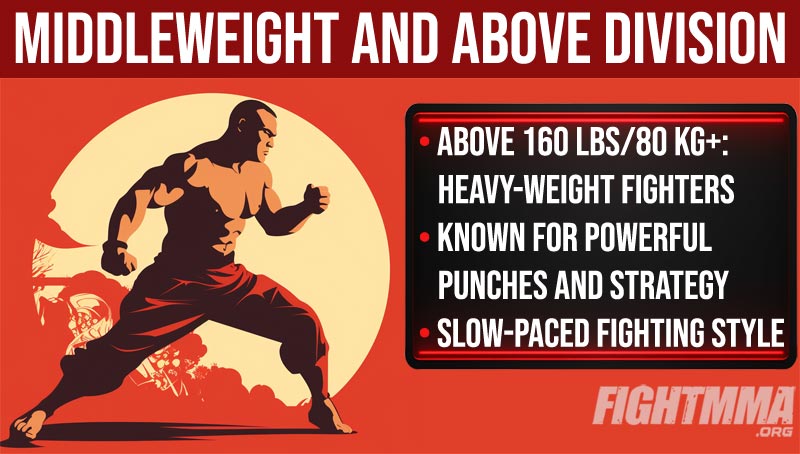
Finally, we arrive at the Middleweight and above divisions. If you’re into bone-rattling punches, earth-shaking kicks, and the raw power that leaves you awe-struck, these are your guys. Weighing anywhere from 160 pounds and up, these heavy hitters are the titans of Muay Thai. But don’t be fooled into thinking it’s all brawn and no brains. These fighters need to strategize and calculate every move and swing because, at this level, one false move can cost the match.
So there you have it – the fascinating spectrum of Muay Thai weight classes, from the lightning-fast Mini Flyweights to the thunderous heavyweights. Remember, each weight class brings its unique flavor to the sport. So whether you’re a fan of the featherweights’ nimble footwork, the middleweights’ balanced brilliance, or the heavyweights’ awe-inspiring power, there’s something in Muay Thai for everyone!
Weight and Performance: An Unbreakable Bond

Alright, ready to tumble down the rabbit hole? Here’s the thing about weight in Muay Thai. It isn’t just an arbitrary number. No, sir! It’s a game-changer, a matchmaker, a dance director. Think about it: Your weight plays a role in every jab, swing, and dodging move.
Consider a lighter fighter. Speedy Gonzalez comes to mind. Zipping in and out, quick as a flash, landing hits faster than a blink. Then think of a heavyweight champ. A veritable Hulk. Each punch lands like a freight train, shifting the tide of the fight in a split second. Two different weights, two different stories, right? That’s the power of weight in Muay Thai.
The Art of “Making Weight”
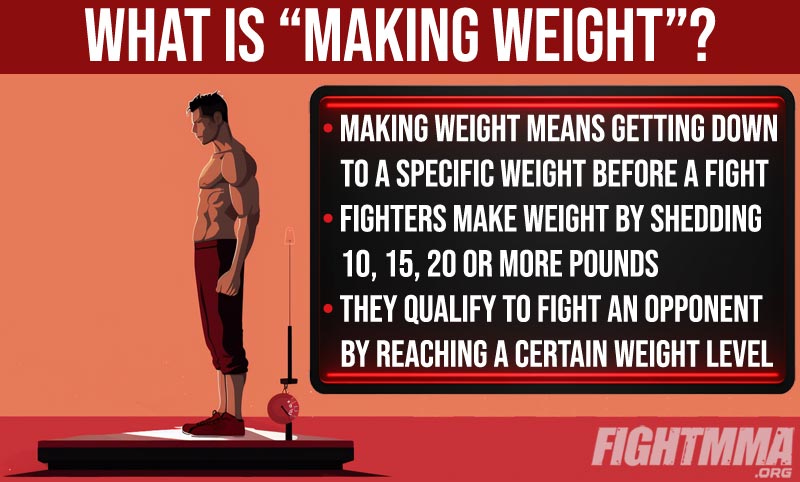
Strap in, dear reader. We’re about to enter the mad world of ‘making weight.’ Now, don’t let the term fool you. It’s not some casual stroll through the park. It’s more like a headlong dash down a winding alley, dodging obstacles left and right.
What is it, you ask? In Muay Thai, ‘making weight’ means getting your body down to a specific weight before a fight. Sounds easy. Oh, if only! Cutting weight is an art, a science, and a touch of madness. It’s a cocktail of dieting, sweating it out in saunas, grueling workouts, and sometimes even dehydration.
These fighters are not just shedding a pound or two. No, my friend, we’re talking serious business. They could drop 10, 15, or even 20 pounds to fit into their weight class. Why? To gain a strategic advantage, level up, and go toe-to-toe with a new set of opponents. It’s high stakes, high reward, but not without its perils.
Weigh-ins: The Pre-fight Ritual
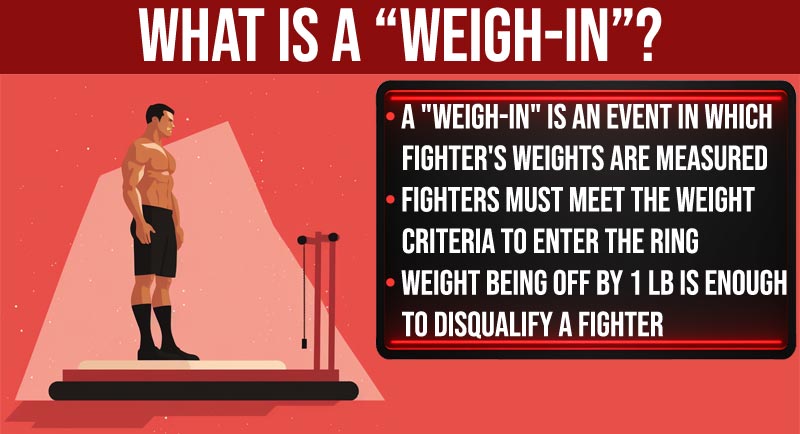
Ever seen a bunch of tough, burly fighters standing on a scale, posing for cameras? Welcome to the ritual of weigh-ins! A pre-fight spectacle that’s as much a part of the sport as the fight itself.
But it’s not just for show. No, sir! Weigh-ins are a critical checkpoint on the road to the ring. They’re the moment of truth when each fighter’s ‘making weight’ journey is tested. They step onto the scale one by one, hearts pounding, eyes locked on the needle.
Why the drama? Because the outcome of the weigh-in can change the course of the fight. If a fighter meets their weight class, it’s a green light to the ring. If not, well, that’s a different story.
So, what happens when a fighter steps onto the scale and the needle swings the wrong way? Imagine a record scratch, a gasp in the crowd, the fighter’s face falling. Missing weight is a big deal in Muay Thai.
But it’s not game over. Usually, fighters are given extra time, a few hours, to shed those last few stubborn pounds. It’s a race against time, a mad scramble filled with saunas, sweat suits, and skipping meals. But the consequences can be severe if they still don’t gain weight.
They might lose a percentage of their fight purse, or the fight could be called off. Sometimes, the fight might continue, but it’ll be a non-title bout. Worst case, they could be suspended. It’s a hard lesson in discipline, commitment, and the importance of ‘making weight.’
So the next time you’re watching a weigh-in, understand the gravity of that moment. It’s not just a photo op but a ritual steeped in significance. It’s a testament to the discipline, the sacrifice, the dedication that Muay Thai fighters bring to this sport we love.
Weight Classes: Impact on Fight Strategies
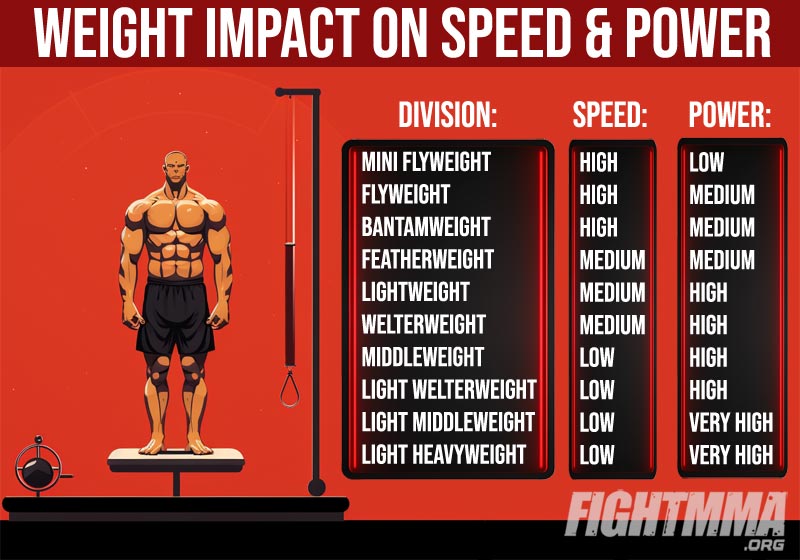
| Weight Class | Typical Speed | Typical Power | Notable Techniques |
|---|---|---|---|
| Mini Flyweight | High | Low | Speed combinations, fast footwork |
| Flyweight | High | Medium | High work rate, quick counters |
| Bantamweight | High | Medium | Technical boxing, rapid combinations |
| Featherweight | Medium | Medium | Balanced approach, focus on strategy |
| Lightweight | Medium | High | Power punches, clinching |
| Welterweight | Medium | High | Aggressive style, strong kicks, and punches |
| Middleweight | Low | High | Power striking, clinching |
| Light Welterweight | Low | High | Heavy hands, clinching, and knees |
| Light Middleweight | Low | Very High | KOs via punches, kicks, and knees |
| Light Heavyweight | Low | Very High | Focus on knockouts, heavy clinching |
Now let’s get into the nitty-gritty, the tactical play, the chess game behind each fight. I’m talking about fight strategies, and believe me. They vary widely across different weight classes.
Picture a mini flyweight bout. These fighters are swift, their movements crisp and lightning-fast. The strategy here? Speed, accuracy, and agility. They’re the hummingbirds of the Muay Thai world, using rapid-fire attacks and lightning-fast evasions.
Now, switch your gaze to a heavyweight bout. A different story unfolds. These fighters are the Titans, the hard hitters. The pace might be slower, but with each punch, each kick lands with a thud that echoes through the ring. The strategy? Powerful, damaging strikes and strategic, calculated moves.
Here’s the thing about weight. It doesn’t just decide which class you fight in. It also dictates your fighting style. Lighter fighters rely on their speed and agility, darting in and out, raining quick jabs on their opponents.
On the flip side, heavier fighters often bank on their power. Their blows carry more weight, literally and metaphorically. They may lack the speed of their lighter counterparts, but they make up for it with their brute strength.
And let’s not forget stamina. Stamina is the silent player, often deciding the outcome of a bout. Heavier fighters might tire quicker due to the effort required to move their mass, while lighter fighters often have the edge in endurance.
So, the next time you watch a fight, consider weight classes’ silent yet influential role. They shape the fight strategies, influence the fight’s pace, and add that extra dash of intrigue to every bout. They’re the invisible puppeteer, guiding the dance that unfolds in the ring.
Famous Fighters and Their Weight Classes
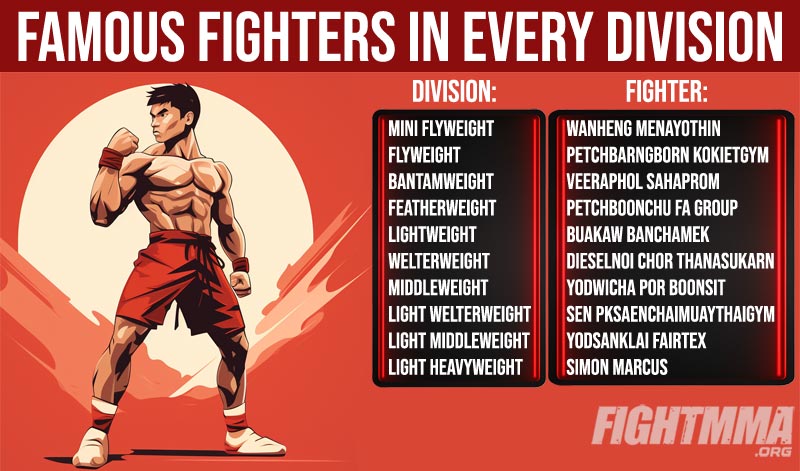
Now, we’re stepping into the spotlight, peering into the hall of fame, the who’s who of Muay Thai. Each weight division has its legends, its torchbearers. These are the fighters who not only made their mark but wrote history with their fists and shins.
In the mini flyweight division, think of names like Nong-O Gaiyanghadao, a fighter with a cheetah’s speed and a fox’s cunning. Moving up to the flyweight division, the name Samart Payakaroon pops up. He was not just a fighter but a ballet dancer in the ring, a poet in motion.
In the welterweight and heavyweight divisions, it’s a different story. Here, the Titans rule, fighters like Yodsanklai Fairtex, a heavyweight who shook the very earth with each of his punches.
| Weight Class | Famous Fighter(s) | Notable Achievements |
| Mini Flyweight | Wanheng Menayothin | Undefeated in 54 fights |
| Flyweight | Petchbarngborn Kokietgym | Won titles in three weight classes |
| Bantamweight | Veeraphol Sahaprom | Held WBC title for nearly a decade |
| Featherweight | Petchboonchu FA Group | He holds the record for most Lumpinee Stadium titles |
| Lightweight | Buakaw Banchamek | Two-time K-1 World MAX champion |
| Welterweight | Dieselnoi Chor Thanasukarn | He dominated the division with his height and knee strikes |
| Middleweight | Yodwicha Por Boonsit | He is known for his strong clinching technique |
| Light Welterweight | Saenchai PKSaenchaimuaythaigym | Known for fighting opponents larger than him |
| Light Middleweight | Yodsanklai Fairtex | Multiple-time world champion |
| Light Heavyweight | Simon Marcus | First non-Thai to win the Lumpinee Stadium title in this division |
Ever wondered how these fighters dominated their respective divisions? It wasn’t just about talent or skill, though they had plenty of both. No, it was about understanding their weight classes and bodies and using that knowledge to their advantage.
The lighter fighters knew their speed was their weapon, so they honed it, and perfected it. They became shadows in the ring, there one moment, gone the next. The heavier fighters, on the other hand, became masters of power. They learned to strike with the force of a sledgehammer, turning each blow into a potential knockout.
So, as we toast these legends, let’s remember how they used their weight classes to carve their paths to glory. It’s a testament to the beauty of Muay Thai, a sport that embraces diversity that creates legends across the spectrum, from the swift mini flyweights to the thunderous heavyweights.
Transitioning Between Weight Classes
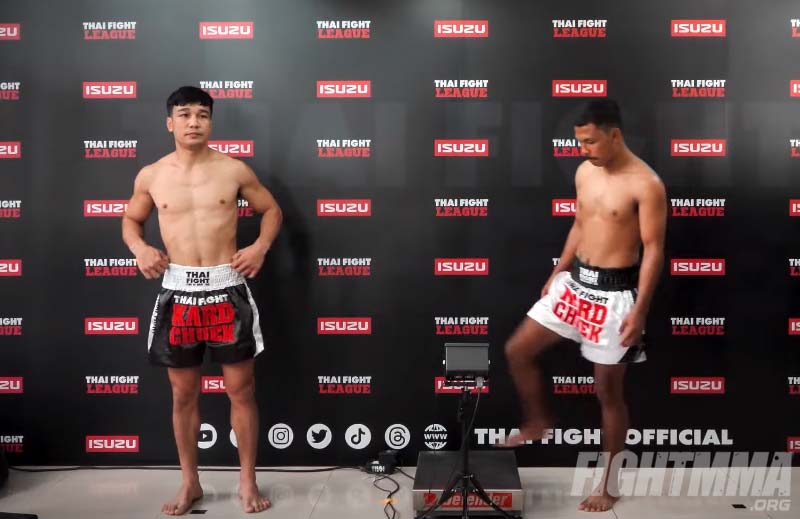
Ever watched a fighter climb up a weight class? Or slip down? It’s like a plot twist in an action flick, keeping us on the edge of our seats. But why do fighters transition between weight classes?
It could be for a new challenge, to test their skills against a fresh batch of opponents. Sometimes, it’s a strategic move to gain an edge. Other times, it’s about personal growth, body changes, or even the allure of a new title. Sometimes it’s just about making a statement, stamping their legacy across multiple weight classes.
Now, here’s the million-dollar question: Do these transitions always work? The answer: Not always. The Muay Thai universe is filled with stories of spectacular success and heartbreaking failure.
Remember Saenchai? The legendary fighter hopped across multiple weight divisions like a gazelle, bagging titles left, right, and center. His transitions were like textbook examples, a masterclass in strategic weight class shifting.
But then, some bit off more than they could chew. Fighters who moved up, only to find the increased power of their opponents overwhelming. Or those who dropped down, only to realize they’d sacrificed their strength and stamina.
So, as we explore the intriguing world of weight class transitions, remember this: It’s a gamble, a roll of the dice. It can catapult a fighter to new heights or bring them crashing down. It’s yet another layer of complexity in the beautifully intricate world of Muay Thai.
Risks and Rewards of Weight Cutting
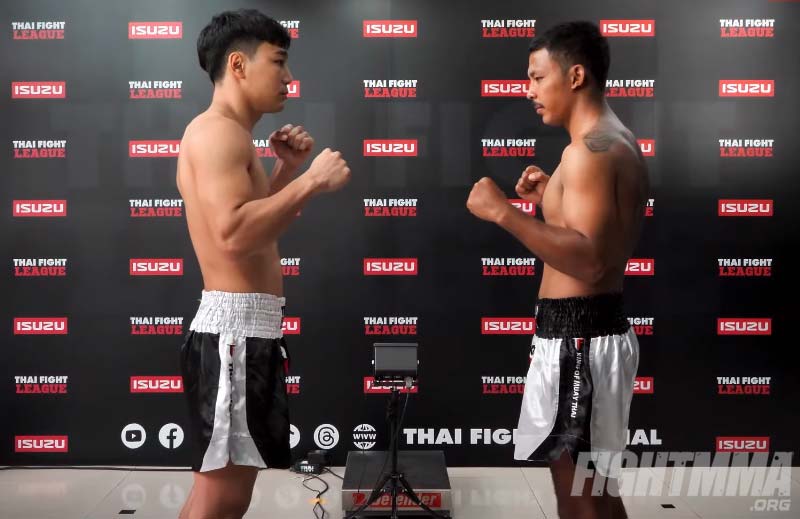
And here we find ourselves at the crossroads of glory and disaster. Cutting weight can be a double-edged sword. On one hand, it can open doors, unlock new opportunities, and give a fighter an edge over an opponent. The rewards can be substantial: new opponents, titles, and horizons.
But hold your horses! The path to success isn’t lined with rose petals. The risks of weight cutting can be significant, even dangerous. We’re discussing possible kidney damage, muscle loss, dehydration, mental fog, etc. It’s a balancing act, a risky dance on a tightrope, and it takes a wise coach and a disciplined fighter to walk that line without falling.
So, the next time you see your favorite fighter step onto the scales, take a moment to appreciate the journey they’ve been on. The art of ‘making weight’ is a hidden battle, fought long before the fight in the ring, a battle that demands sacrifice, wisdom, and, sometimes, a pinch of madness. It’s part of the unseen drama, the hidden narrative that makes Muay Thai such an endlessly captivating sport.
Embracing the Spirit of Muay Thai in Every Weight Class

Muay Thai is more than just a sport. It celebrates the human spirit, strength, agility, strategy, and heart. And weight classes? They are the vessels that carry this spirit, from the mini flyweights, with their lightning-fast reflexes, to the heavyweights, with their earth-shaking power.
So, whether you’re a fighter, a coach, or a fan, remember to honor the spirit of Muay Thai in every weight class. Respect each fighter’s journey and battle against the scales before they step into the ring. And most of all, revel in the diversity and complexity that weight classes bring to this age-old sport.
After all, weight classes are not just categories; they are chapters in the endless, enthralling saga of Muay Thai.
Wrap Up:
That does it for this article. Let us know if you have any comments or questions below.